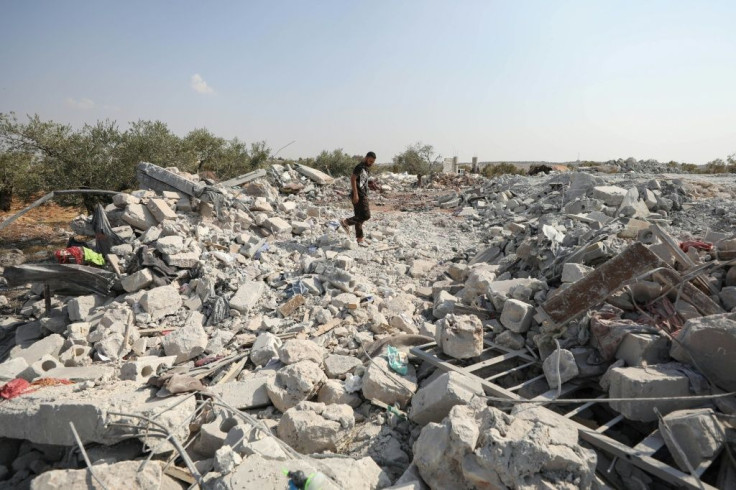Are Al Qaeda And ISIS Working Together? ISIS Leader Killed In Al Qaeda Territory

As U.S. intelligence officials Monday sifted through information captured during the weekend raid that killed Islamic State group leader Abu Bakr al-Baghdadi, questions arose about whether Baghdadi’s ISIS was working with al Qaeda.
Al-Baghdadi was killed in Barisha in Idlib province, whose population has swelled as a result of Syria’s civil war. The village is controlled by groups with reputed ties to al Qaeda. When the last of ISIS’ Syrian strongholds were liberated in March, many of the survivors fled to Idlib.
“Several groups that have ties with al Qaeda have presence in this area,” Sadradeen Kinno, a Syrian researcher, told Voice of America.
Saturday night’s raid by U.S. Special Operations forces relied on intelligence supplied by Kurdish forces and came three weeks after President Trump announced he was pulling U.S. forces from Syria. The raiders helicoptered in from Erbil, Iraq, crossing what is now Russian airspace to conduct the attack in an area controlled by Huras al-Din (translated as Guardians of Religion Organization), which emerged in Syria early last year and is believed to have 1,500 to 2,000 fighters, half of whom are of non-Syrian origin.
“ISIS and al Qaeda-affiliated groups in Syria disagree ideologically, but now they face a common existential threat from the U.S. and Russia. So, I believe al-Baghdadi ended up in Idlib by striking a deal with Huras al-Din and other groups that are active there,” Kinno said.
The death of al-Baghdadi may have left al Qaeda poised for a comeback.
“Al Qaeda has been strategic and patient over the past several years,” Nathan A. Sales, the State Department’s counterterrorism coordinator, said in August. “It let ISIS absorb the brunt of the world’s counterterrorism efforts while patiently reconstituting itself.”
Colin P. Clarke, a senior fellow at the Soufan Center, a research organization for global security issues, and Charles Lister, a senior fellow and director of the Countering Terrorism and Extremism Program at the Middle East Institute, wrote in a recent article in Foreign Policy that al Qaeda has been building up its position in Syria for years, moving assets from Afghanistan and Pakistan to the Levant.
Since the death of Osama bin Laden in 2011, al Qaeda “began pursuing more limited strategic goals with a focus on localism and incrementalism,” Clarke and Lister wrote. They said Huras al-Din, led by Khalid al-Aruri, also known as Abu al-Qassam al-Urduni and one of al Qaeda’s three global deputies, has focused its energies on enemies of Islam, both in the region and the West.
The Institute for the Study of War concludes in a research report that both ISIS and al Qaeda are more than terrorist groups. The institute describes them as insurgencies aimed at overthrowing existing governments that use terror as a tactic.
“Separating the elements of ISIS and al Qaeda that are actively working to attack the West from the main bodies of those groups fighting in the Middle East, Africa and South Asia is impossible. All al Qaeda groups and ISIS affiliates seek to take the war into the West to fulfill their grand strategic objective of establishing a global caliphate, albeit according to different timelines,” the institute said.
© Copyright IBTimes 2025. All rights reserved.






















